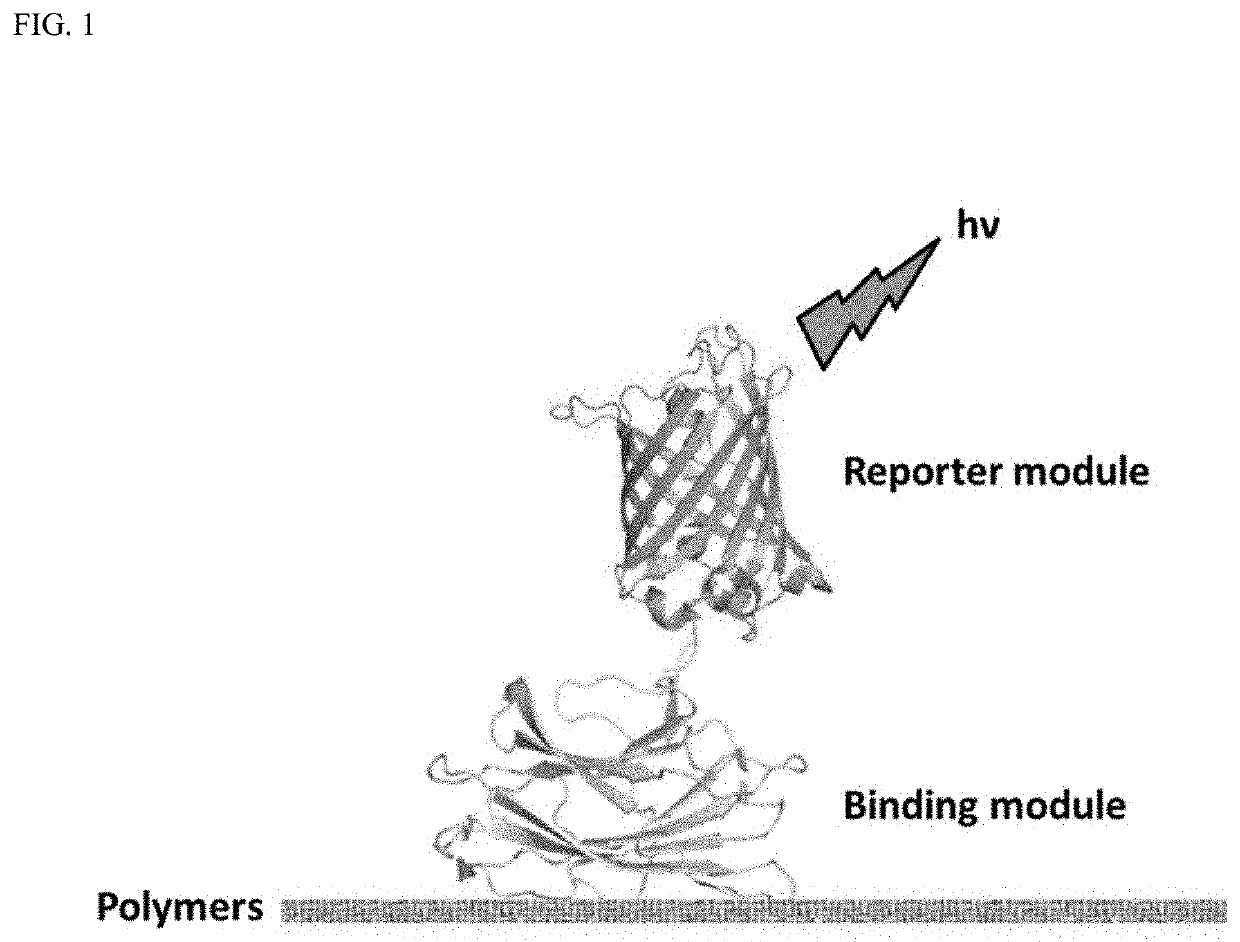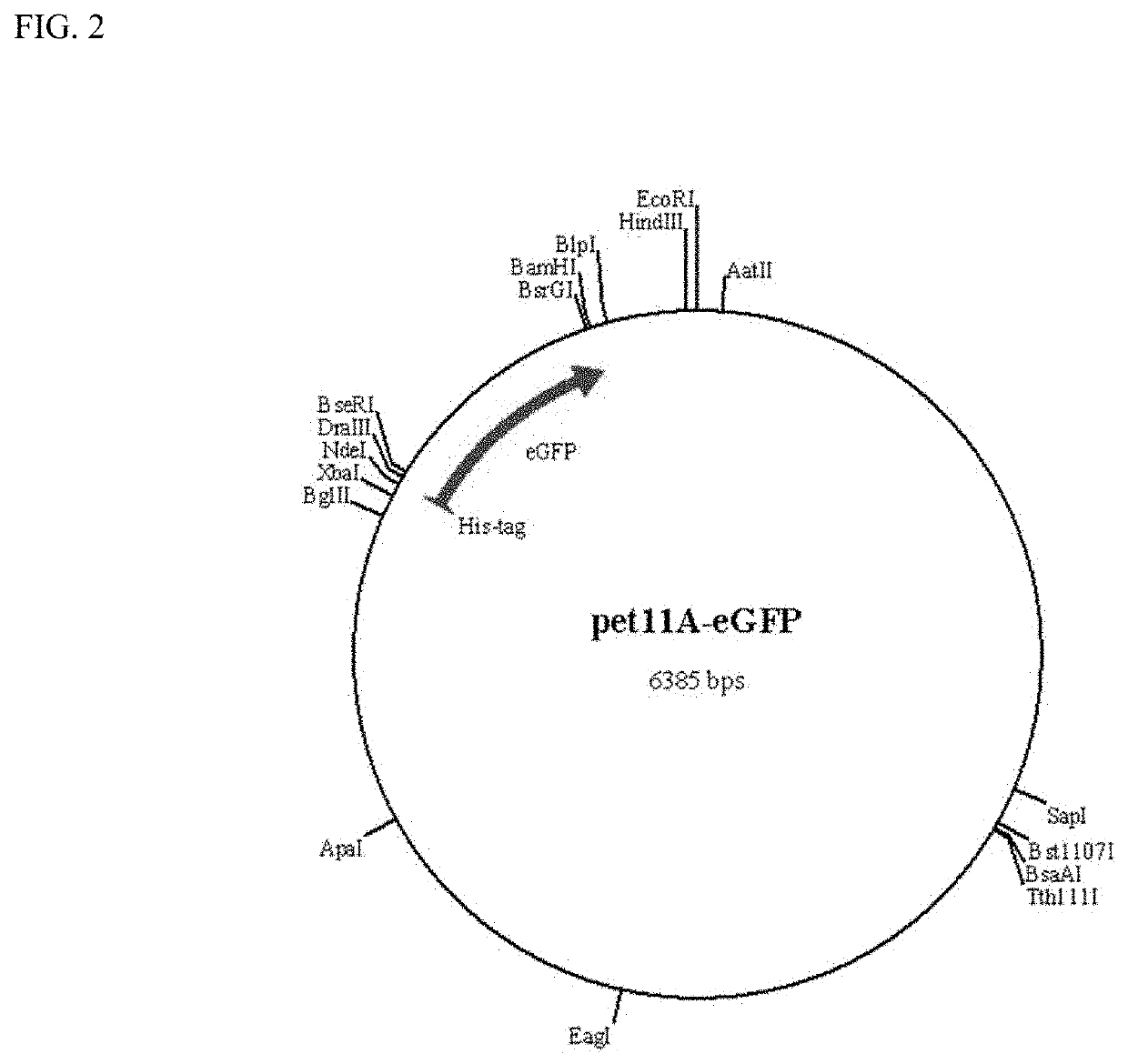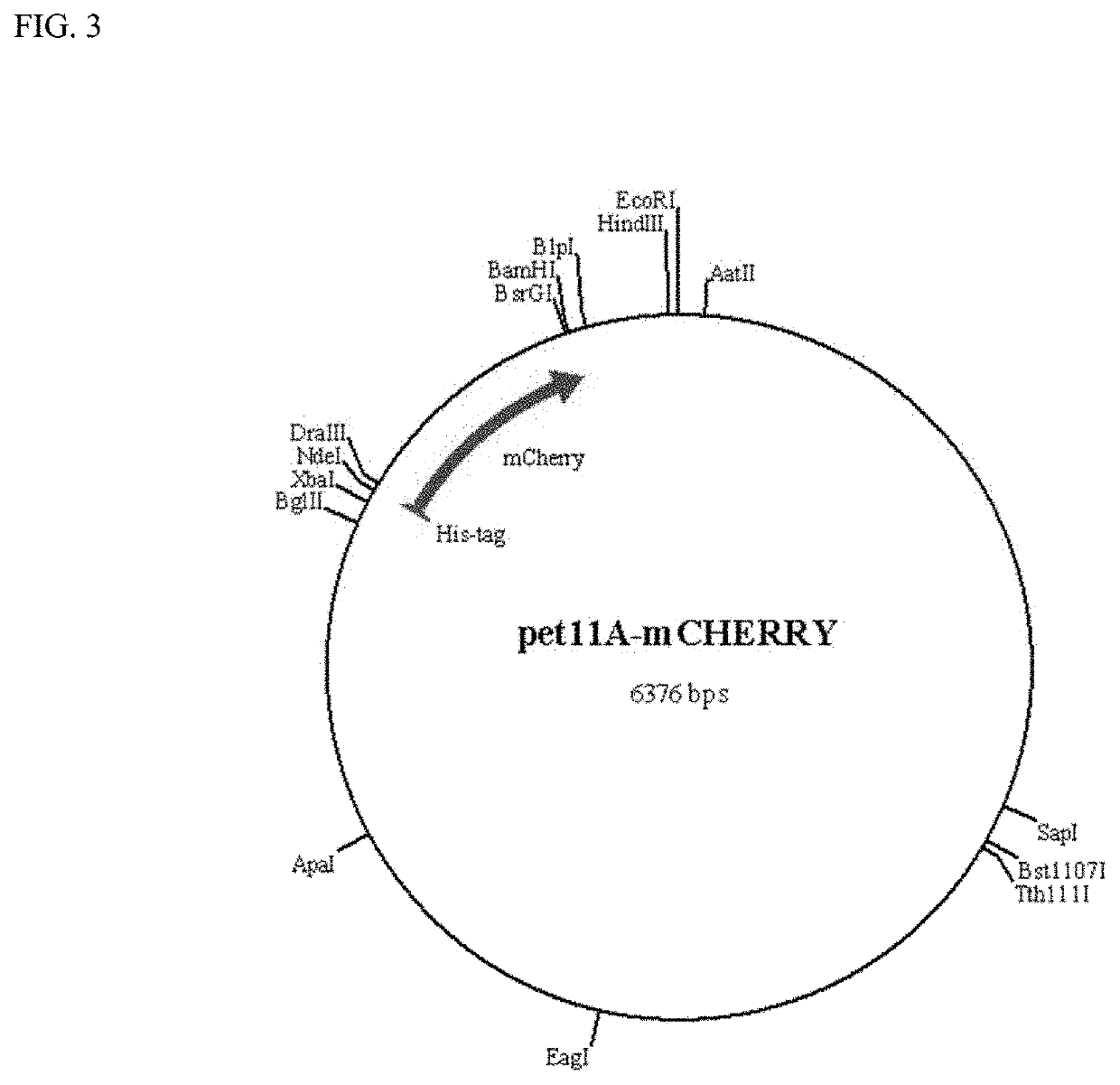Polymer probes and methods
a polymer probe and probe technology, applied in the field of polymer probes and methods, can solve the problems of inability to predict the outcome of such treatments in a practical way, lack of thorough analysis of pulp and paper properties, and high cost and time consumption of industrial scale trials,
- Summary
- Abstract
- Description
- Claims
- Application Information
AI Technical Summary
Benefits of technology
Problems solved by technology
Method used
Image
Examples
example 1
[0084]This example demonstrates the production of reporter modules (fluorescent proteins) in accordance with the present invention. Four reporter modules (eCFP, eGFP, mCherry and mOrange2) were cloned in pET11 vector and expressed in prokaryotic systems. FIGS. 2-5 show the genetic maps of the respective reporter modules (fluorescent proteins) cloned into the pET11 vector. Nucleic acid and amino acid sequences for the reporter modules are shown in SEQ ID NOS: 23-30, respectively. These vector constructs are used for labeling binding modules from cloned genes with the reporter modules. Single fluorescent proteins (reporter modules) are used to measure the background (non-specific) binding to the pulp polymers.
[0085]Proteins were purified using the following methodology. E. coli BL21(DE3) GOLD pLysS cells (ThermoFisher Scientific) bearing the selected expression plasmid (reporter module, binding module or complete Probe) were grown at 37° C. in Luria-Bertani broth containing 100 μg / ml ...
example 2
[0089]This example demonstrates production of binding modules (CBMs) in accordance with the present invention. Five CBM genes (CBM 3a, 4-1, 15, 17, and 27) were cloned in pET11 vector and expressed in prokaryotic systems. The CBMs were produced and purified by affinity chromatography (FIG. 7). The yield of the production of the CBM was around 10 mg of protein / L of culture. FIG. 7 is a SDS-PAGE of purified CBMs; the arrow highlights the protein of interest. Table 3 displays the properties of the purified binding modules (here, CBMs).
[0090]
TABLE 3Amino Mol. Wt. ProteinAcids (#)(Da)pICBM3a20622375.17.58CBM4-116116528.73.88CBM1722123926.95.46CBM1517117949.44.31CBM2718521242.65.57
example 3
[0091]This example demonstrates the fluorescence emission by reporter modules in accordance with the present invention. Emission spectra of pulp and reporter modules (eGFP, mCherry and mOrange2) were measured. The spectra were acquired at 23° C. and the proteins were diluted in a 20 mM Tris-HCl pH 7.5 buffer containing 20 mM NaCl and 5 mM CaCl2. The spectra in FIGS. 8 and 9 show that depending on the excitation wavelength (488 nm vs 549 nm), the change in fluorescence intensity (FI) (eGFP vs mCherry) can be measured independent of pulp auto-fluorescence or other probes. FIG. 8 shows the emission spectra of reporter modules (eGFP and mCherry) and of a pulp handsheet disk after excitation at 549 nm. With this excitation wavelength, mCherry fluorescence dominates over the other substrates signal. FIG. 9 shows emission spectra of FPs (eGFP and mCherry) and a pulp handsheet disk using an excitation wavelength of 488 nm. At this excitation wavelength, the pulp and mCherry fluorescence is ...
PUM
| Property | Measurement | Unit |
|---|---|---|
| fluorescence emission peak | aaaaa | aaaaa |
| excitation wavelength | aaaaa | aaaaa |
| emission peak | aaaaa | aaaaa |
Abstract
Description
Claims
Application Information
 Login to View More
Login to View More - R&D
- Intellectual Property
- Life Sciences
- Materials
- Tech Scout
- Unparalleled Data Quality
- Higher Quality Content
- 60% Fewer Hallucinations
Browse by: Latest US Patents, China's latest patents, Technical Efficacy Thesaurus, Application Domain, Technology Topic, Popular Technical Reports.
© 2025 PatSnap. All rights reserved.Legal|Privacy policy|Modern Slavery Act Transparency Statement|Sitemap|About US| Contact US: help@patsnap.com



